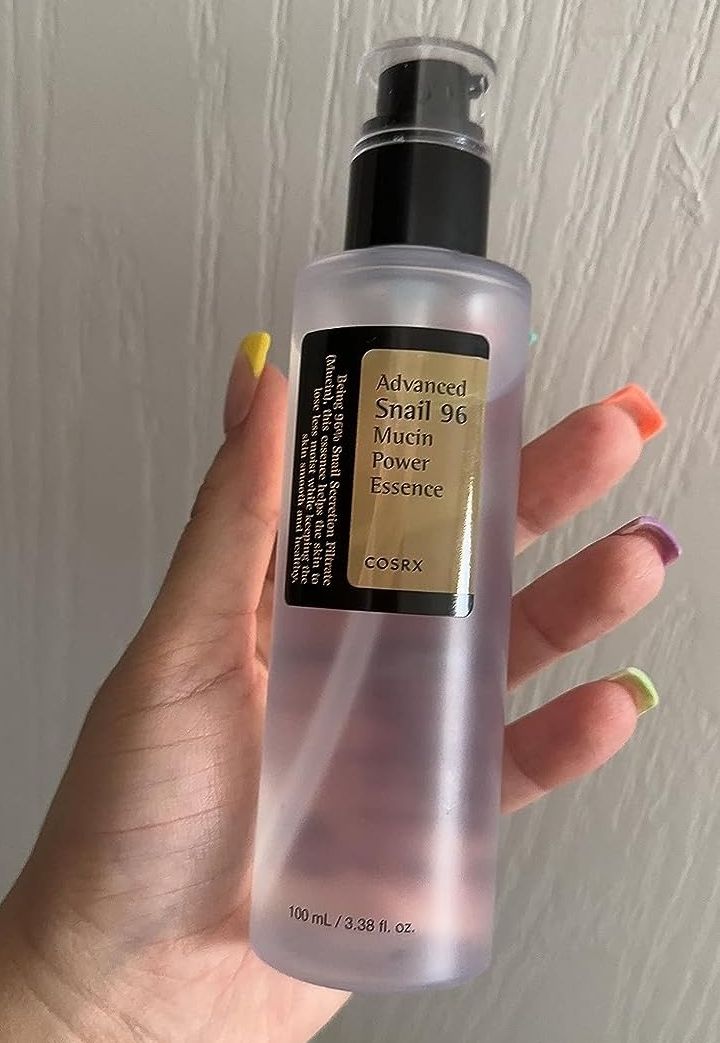
The New Year is finally here, with many participating in Dry January as a way to start 2024 off on a healthier note. It’s no secret that, as a toxin, alcohol has many negative effects on the body — and yet, this evidence still may not be enough to dissuade some of us from indulging in one too many.
But if you’re a skincare fiend, particularly one who splurges on the latest and greatest lotions, potions and procedures, Dry January may just be what the dermatologist ordered to get your skincare (and budget) goals back on track.
The major ways alcohol affects your skin.
Dehydration
Before you shell out for the latest hydrating serum in an attempt to achieve plump, dewy skin, you may want to first take a look at your drinking habits. You might very well be doing the skincare-equivalent of running a space heater for warmth with all the windows open in the middle of January.
As a diuretic, alcohol causes the body to urinate more frequently, which causes dehydration in the body. And if your body is dehydrated, your skin is absolutely dehydrated.
“When you’re systemically dehydrated, one of the first places you see it is in the skin,” said Dr. Teo Soleymani, a California-based, double board-certified dermatologist.
This alcohol-induced dehydration is why we can look a bit “rougher” than usual the morning after a night of drinking.
“Dehydration in our skin can accentuate lines and wrinkles and make under-eye circles appear worse,” said Dr. Angela Casey, an Ohio-based, board-certified dermatologist.
Additionally, if the body is dehydrated for too long, it may try to counteract this dryness by kicking its sebum production into high gear.
“People may feel like their skin gets oilier after a night of binge drinking or notice that they tend to have oilier skin as a result of long-term drinking,” Soleymani said.
But the good news is that when you forgo the booze (and prioritize drinking water), the dehydrating effects of alcohol are fairly easy to fix.
“Within several days [of quitting alcohol], patients may notice a difference in their skin hydration and that their skin appears smoother, brighter and stronger,” Casey said.
Inflammation and irritation
Have you ever noticed that when you drink, your face always seems to flush and turn red?
“Alcohol itself is a vasodilator. But its breakdown product, acetaldehyde, is a very potent vasodilator in the skin,” Soleymani said. As vasodilators, alcohol and acetaldehyde dilate our blood vessels, causing our faces to flush and turn red.
While most of us can break acetaldehyde into a less-toxic by-product called acetate, Soleymani explains that not everyone has the gene responsible for creating the enzymes that can break acetaldehyde down into acetate.
“As [those without the gene] drink alcohol, the alcohol converts into acetaldehyde. The acetaldehyde builds up and accumulates in the skin. Blood vessels in the skin start to dilate, so you get rosy cheeks or a flushed look,” Soleymani explained.
While your new rosy glow may not bother you too much, the inflammation of this flushing bothers your skin, and quite a lot.
“This pro-inflammatory environment can exacerbate underlying skin issues like eczema, rosacea, acne or psoriasis and contributes to extrinsic skin aging,” said Dr. Ahuva Cices, a New York-based cosmetic dermatologist and assistant professor of dermatology at the Icahn School of Medicine at Mount Sinai Hospital.

This additional and prolonged irritation can set the stage for a skin problem that can’t be solved with a simple serum — broken capillaries.
“Flushing, inflammation and broken capillaries are all part of a cycle in our skin; more flushing and inflammation leads to skin damage and broken capillaries,” Casey explained. “Once the broken capillaries are present, there is more blood flow through the skin which contributes to increased flushing.”
According to Casey, if you already have broken capillaries, cutting back on drinking may allow them to become less noticeable as they are less dilated. Unfortunately, the only way to truly remove them from the skin is with expensive laser procedures. As with many skincare and health-related problems, in this case, an ounce of prevention is worth a pound of the cure.
It breaks down antioxidants and collagen
Many of us happily shell out hundreds of dollars every year on sunscreens, retinoids and vitamin C skincare products to protect our skin’s most important building block for helping us look youthful — collagen. But our drinking habits may be responsible for undercutting the good these products can do for our skin.
“Alcohol is very inflammatory, in our skin and our bodies in general,” Casey said. “Consistent inflammation over time can lead to the breakdown of collagen and elastic fibers that support our skin, and keep it supple and smooth.”
Additionally, alcohol may also lower our skin’s natural ability to protect itself against damage.
“There is data to suggest that alcohol can lower antioxidant levels in the skin. Natural antioxidants protect the skin against free radical damage caused by UV light exposure and environmental factors like pollution,” said Dr. Joshua Zeichner, a New York-based board-certified dermatologist and associate professor at the Icahn School of Medicine at Mount Sinai Hospital.
Zeichner further explained that skin inflammation caused by free radical damage can contribute to premature aging. And by lowering antioxidant levels in the skin, alcohol can make our skin even more susceptible to damage from its greatest enemy — the sun’s UV rays.
“Studies have shown there is increased sun-induced skin damage due to free radical damage when skin is exposed to UV radiation in combination with alcohol,” Cices said. “We are also less likely to remember to reapply sunscreen every two hours when drinking.”

While day-drinking may not be in our immediate futures these winter months, when the weather warms up, Zeichner recommends setting a timer as a reminder to reapply sunscreen (or designate your favorite sober friend as your official sunscreen-reminder-er). But as the best laid plans often go awry, it never hurts to apply an additional precautionary measure.
“I suggest applying an antioxidant serum that contains vitamin C as part of a regular skincare routine, but it is especially helpful if you are drinking alcohol to provide the skin with additional antioxidant protection,” Zeichner said.
It can cause complications to skin procedures
Not only can alcohol wreak havoc on the skin itself, but it can also create complications when it comes to skincare treatments and procedures.
“Alcohol is a mild anticoagulant, so we often tell people no drinking several days before surgery and no drinking the week after surgery so they don’t bleed,” Soleymani said.
In addition to an increased bleeding risk, Casey points out alcohol consumption can also lead to a higher risk of bruising. This is why she recommends that her patients avoid alcohol for procedures where there is an increased risk of bleeding, bruising or procedures that requires time to heal such as:
Injections (e.g. fillers, Botox)
Skin cancer and mole removals
Skin biopsies
Laser resurfacing and microneedling treatments
How to have a drink now and then, and maintain healthy skin.
“There is no amount of alcohol that will not cause damage,” Cices said. “That being said, I believe in indulging in moderation. Chronic, persistent alcohol consumption will result in more damage than occasional or light drinking.”
Depending on a variety of factors, quitting alcohol cold turkey may not be easy or feasible for many. If you’re looking for a “less-bad” alcoholic option, there are several factors to consider.
As alcohol is already inflammatory, it’s best to avoid other ingredients that can contribute to inflammation.
“Sugary cocktails are a double whammy since both the alcohol and the sugar cause inflammation in the skin,” Casey said. “Red wine contains sugar and histamine releasers, again delivering a double dose of inflammation and flushing to the skin.”
Soleymani also points out that drinks with a high glycemic index can also trigger inflammation. “Beers, wheat-based malt beverages and wines can sometimes make skin conditions flare ... partly due to the gluten in the drink being inflammatory. This is less common in highly-distilled grain alcohols, like vodka, or agave-based alcohols like tequila.”
And while hard liquor may contain less sugar and gluten that trigger inflammation, ounce for ounce, liquor delivers more alcohol, which is highly inflammatory.
“Keep in mind that consuming the same volume of a drink with a lower alcohol content like beer or wine will have less alcohol than the same amount of liquor,” Cices said.
Yes, you can reverse some of the damage.
While many of us may have overindulged over the holidays, the good news is some of the damage done by alcohol can be reversed with relative ease.
“Short-term skin changes such as dullness, dryness and puffiness are common after drinking alcohol. These negative effects can be reversed by taking an extended break from alcohol such as with Dry January,” Cices said.
However, just like we may notice it’s harder to recover from a hangover in our later years than in our 20s, our skin also has a harder time bouncing back from alcohol’s damage as we grow older.
“With age, our skin’s antioxidant defenses decline naturally. For this reason, we can infer that alcohol may have a greater impact on the skin of people who are older rather than on younger skin,” Zeichner said.
If you’re able to quit or reduce your alcohol consumption while you’re in your 20s, your skin in your 30s, 40s and beyond will thank you. That said, it’s never too late to start making healthier decisions, and Dry January may be the perfect time to start.
